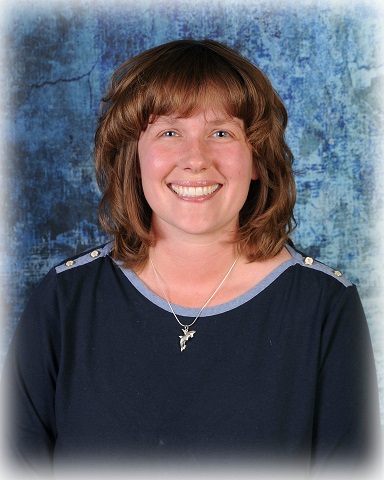Melissa Jones is a secondary science teacher who works with junior high and high school students to introduce them to STEM learning experiences, competitions, and hands-on, collaborative learning experiences in Carlin, Nevada. Melissa strongly believes that quality hands-on, problem-based learning experiences increase the engagement and understanding of science by her students. Melissa has completed the Robotics Academy’s ROBOTC for VEX EDR Professional Development course through Carnegie Mellon University and is continually networking in the community to provide professionals the opportunity to be in her classroom. Melissa has a Bachelor’s of Science in Animal Science from the University of Nevada, Reno and a Masters of Arts in Secondary Education from Sierra Nevada College. Melissa is also currently pursuing National Board Certification in Science.

Melissa, we are so happy to have you as one of our 2018 STEM Teachers of the Year! Can you tell us about your professional journey to this point?
I was an Animal Science major at the University of Nevada, Reno where I loved being a student ambassador for the College of Agriculture, Biotechnology, and Natural Resources. I found my niche for teaching and went to Sierra Nevada College to earn my Masters in Education. I completed my student teaching at McQueen High School in Reno, Nevada and then decided to return to rural Nevada. This is my tenth year of teaching and my third year teaching STEM courses for 7th-12th grade students at Carlin Combined Schools. Four years ago, a colleague, Janie Kimble, attended the Joint Science and Technology Institute in Aberdeen, Maryland. Upon returning, we brainstormed what experiences we could bring to our students as they were completely unaware of what was available. We started a STEM Club, in which many students were interested and participated during our inaugural year. From this initial effort, we have grown the STEM Club in both the high school and junior high divisions. I have undertaken the designing of the student classes, and my colleague manages the public relations and networking within and outside of our community. Through this division of responsibilities, we have effectively built a STEM Club and courses that are supported by organizations throughout the United States.
It sounds like STEM Club has been really successful for your community! What other goals or upcoming projects should we watch for?
A major goal this year was adding and completing our rookie season in the FIRST Tech Challenge. Throughout the remainder of the year, I will be recruiting and analyzing the potential of adding a second FIRST Tech Challenge team or a different FIRST program into our Club or Combined School.
Congratulations on your first year in the FIRST Tech Challenge. We'll keep rooting for your team! It's obvious that you are passionate about STEM and find new opportunities to bring to your students. What is the best part about teaching STEM that keeps you so motivated?
The best part about teaching STEM is observing all the different methods that students use to solve a problem. I love watching them work through their solution and realizing that there is more than one method to solve a problem. They start analyzing other teams’ solutions in order to optimize their own solution. You can view their thinking and strategy every day, which is inspiring.
What would you say is the biggest hurdle when teaching STEM?
The biggest hurdle when teaching STEM is that in a rural school, I teach numerous courses. In the afternoon, my classes are doubled up which can be challenging when I am working with students on STEM projects and then have to answer an 11th/12th-grade physics question and repeat this throughout the class hour. Unlike larger schools where teachers see numerous students, I teach numerous classes. The rural school environment poses this unique challenge of providing a variety of courses with a small staff in order to meet the students’ needs within the same number of hours per day as larger, more urban schools.
Just how many classes are you teaching this year?
This year I teach eight different classes in six class hours. I am teaching 7th-grade Advanced Science Technologies, Biology, Physics, 8th-grade Advanced Science Technologies, Science Seminar, STEM I, and STEM II.
Wow! As STEM Teacher of the Year, SW Gas sponsored a $1,000 award for your classroom. With so many STEM courses, how did you decide to use the award?
The award funds were spent to enhance the aeronautical unit for our STEM I and II courses. We had several students that had an interest in aeronautics, so we created a nine-week unit where they could explore the forces of flight and engineer their own rubber band airplane using 3D printers. The award funds will be used to purchase a flight simulator so that they can continue their exploration and knowledge of aeronautics.
What a great opportunity for your students! What advice do you have for other teachers interested in implementing STEM?
The advice that I would give teachers interested in implementing STEM is to select a project and start immediately! You will learn so much through the first project about presentation, time management, student interest, and capability. However, if you never try or your effort is spent in over planning the project to make it perfect, then you will never implement a STEM lesson. Let the students explore solutions and teach them that it is okay if their solution fails, as they can re-engineer it and try again. The students will learn to persevere through a problem instead of waiting for someone to fix it for them, which will help them later in life. Also, reflection is key! At some point after the STEM lesson, you need to reflect to see if everything was aligned and the end product matched the objective.
Thanks so much for sharing with STEM Hub, Melissa!
Read about our other 2018 STEM Teachers of the Year here and here.